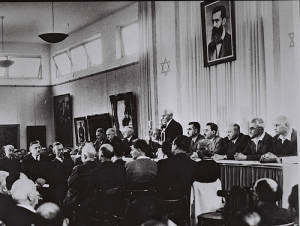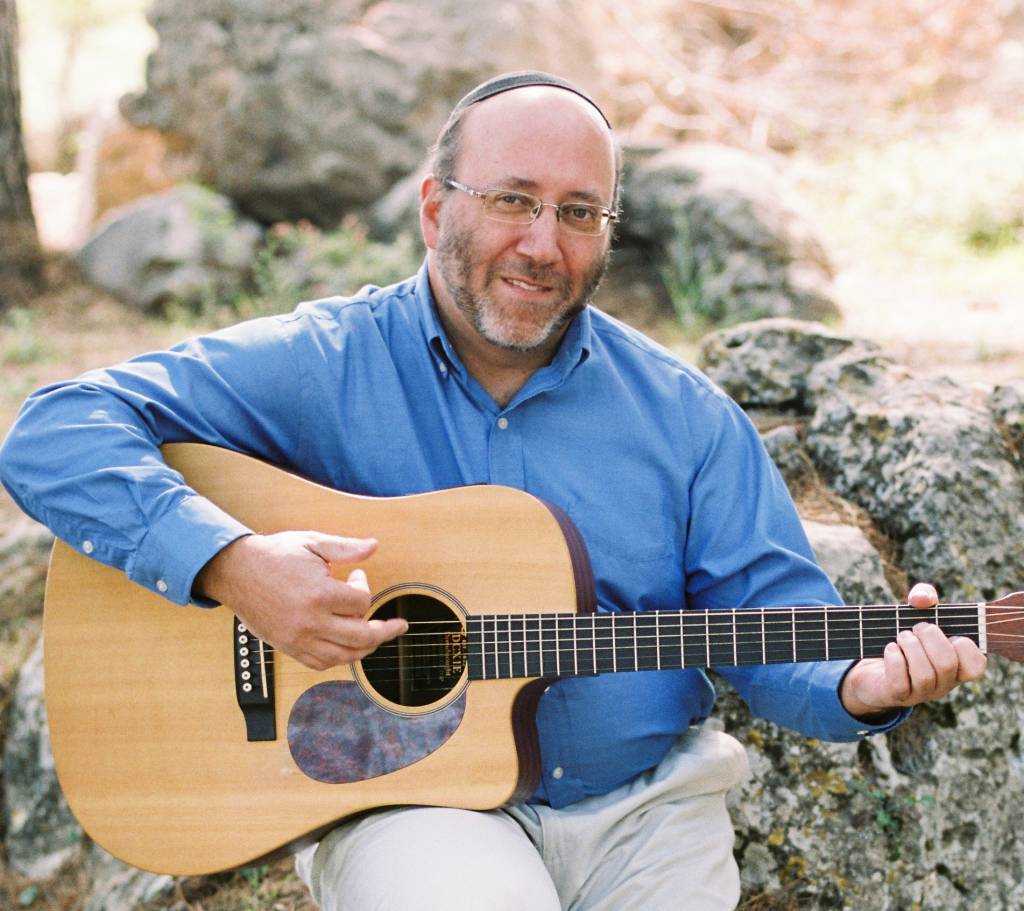Any visit to Tel Aviv is incomplete without a stop at Independence Hall on 16 Rothschild Street, the location where the State of Israel was declared.
When I was in eighth grade we went on a school trip to Philadelphia, Pennsylvania. If you are even just slightly familiar with American history, you know the important role that the city of Philadelphia played. No, I am not referring to Rocky Balboa – I am talking about Independence Hall. In this beautiful, grand building the Declaration of Independence and the US constitution were debated and signed. Philadelphia is the birthplace of the United States. Independence is celebrated every year on July 4.
In Israel we also celebrate Independence Day or, in Hebrew, Yom Ha’atzmaut. It is celebrated on the Hebrew date of the fifth of Iyar. In contrast to the US, the official declaration took place, not in a large, grand building but in a very modest location and under difficult circumstances.

David Ben-Gurion announces the establishment of the State of Israel on May 14, 1948. (GPO)
Any visit to Tel Aviv is incomplete without a stop at Independence Hall on 16 Rothschild Street, the location where the State of Israel was declared. The building was one of the first homes built in Tel Aviv after lots were drawn to divide up the land allocated for the new city. The non-descript stucco building was a private home built by Meir Dizengoff, who served as the Mayor of Tel Aviv. When his wife died in 1930, Dizengoff founded an art museum in her memory and donated his residence to serve as the home for the museum. The museum remained there until 1971 when it was moved to its permanent home.
On November 29, 1947, the UN voted in Resolution 181 to partition Palestine, which had been under the British Mandate. It was an emotional day for the worldwide Jewish community as the hopes and dreams of returning to our national homeland were becoming a reality. The Arabs rejected the plan and a civil war broke out between the local Arabs and Jews. The bloodshed continued for months and continued to get worse. In March of 1948 the violence was so intense that the US considered removing its support for the declaration of the Jewish State. While the US supported the concept of a Jewish state, it seemed that it could not be practically implemented.
In Palestine as well the Jewish leadership debated whether or not to officially declare the independence of the new state. David Ben Gurion, who would become the first Israeli prime minister, and other leaders felt that delaying the declaration would be a mistake and could jeopardize a future opportunity. Others felt that perhaps it would be better to wait in the hope that the violence would settle down. In a close vote, it was decided to declare the new state.
On Friday, May 14, 1948, just before four p.m., Ben-Gurion entered the Tel Aviv Art Museum, the former home of Dizengoff. Though invitations had been sent out and secrecy was requested for security reasons, the hall was packed and a large crowd had gathered outside. So much for keeping it a secret. Ben Gurion banged his wooden gavel on the table and called the hastily arranged meeting to order.
The survival of the soon-to-be-declared state was not a given, as sworn enemies were ready to pounce immediately on it. With that backdrop, there were no marching bands, parades or flag-raising ceremonies. The meeting was short and to the point. The state was declared, the declaration was read aloud, and Rabbi Yehuda Leib Fishman-Maimon, then head of the Religious Zionist movement, recited a blessing. Everyone sang the national anthem and dispersed to their homes in order to welcome the Sabbath.
While the circumstances surrounding the declaration were challenging, it was without question one of the most profound moments in Jewish history. While the building in which independence was declared may not be awe-inspiring, the moment was one that changed the destiny of the Jewish people. Though they knew war was at hand, nevertheless spontaneous celebrations erupted. Tears of joy flowed. Singing and dancing could be heard and seen in the streets.
If you visit Independence Hall, you will have the privilege of sitting in the very same room in which the 300-plus people sat in 1948. Everything in the room is original, left exactly the way it was when Ben Gurion declared the establishment of the Jewish State. The guides in the hall do a wonderful job of telling the story and transporting you back to that historic day. They conclude by playing a recording of Ben Gurion’s declaration and the singing of the national anthem. As visitors stand and join in the singing, reaffirming independence, it seems as if the State of Israel has been established once again.
By: Moshe Rothchild
Do You Love Israel? Make a Donation - Show Your Support!
Donate to vital charities that help protect Israeli citizens and inspire millions around the world to support Israel too!
Now more than ever, Israel needs your help to fight and win the war -- including on the battlefield of public opinion.
Antisemitism, anti-Israel bias and boycotts are out of control. Israel's enemies are inciting terror and violence against innocent Israelis and Jews around the world. Help us fight back!
